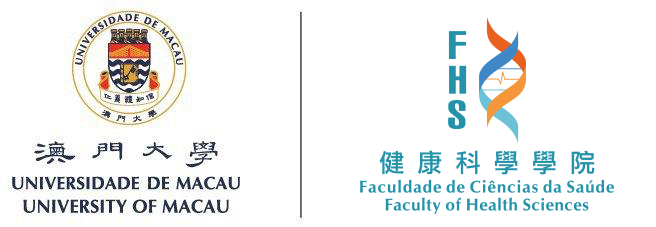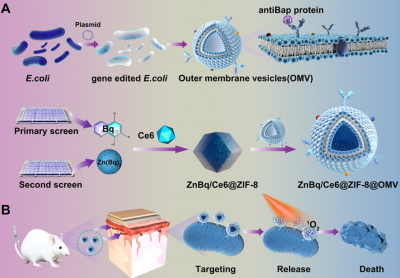A team led by Prof. Zhen YUAN has made significant progress in addressing antibiotic limitations against Acinetobacter baumannii (A. baumannii). The related research findings have garnered significant attention in the field of biology and were published in the internationally renowned journal Science Advances.
In recent decades, the excessive use of antibiotics has led to the emergence and widespread dissemination of multidrug-resistant bacteria, posing a significant challenge to public health. Among these multidrug-resistant bacteria, a few have been classified by the WHO as ESKAPE pathogens, requiring priority attention. One such pathogen is multidrug-resistant A. baumannii. To date, the availability of effective antibiotics for treating A. baumannii bacterial infections is very limited, leaving healthcare professionals with few options, known as the last line of defense – such as tigecycline and colistin. However, these antibiotics come with significant adverse effects including nephrotoxicity, and worse still, resistance to tigecycline and colistin have been reported. Therefore, the dire shortage of antibiotics necessitates immediate action to develop new antibiotics. Recent studies have focused on the development of metal complexes as novel antibacterial agents against multidrug-resistant bacteria. Metal complexes, centered around by one or more metal centers, form highly diverse three-dimensional structures with the assistance of multiple ligands, exhibiting more effective bactericidal efficiency, higher targeting specificity, and lower resistance.
To combat multidrug-resistant A. baumannii, Prof. Yuan’s group carried out a comprehensive screening of over 1,100 FDA-approved bioactive small-molecule drugs and inspected the efficacy of broxyquinoline (Bq) in combination with various metal ions. Among the examined compounds, the research team identified a metal complex named Zn(Bq)2, which was determined to be an exceptional candidate, exhibiting an ultra-low minimum inhibitory concentration of approximately 0.21μg/mL against A. baumannii.
Schematic of construction of ZnBq/Ce6@ZIF-8@OMV with antibacterial activity. (A) Synthesis process of ZnBq/Ce6@ZIF-8@OMV. (B) Schematic of the antibacterial performance of ZnBq/Ce6@ZIF-8@OMV for targeted treatment of MDR A. baumannii-induced meningitis.
Efficient antibacterial metal complexes often possess hydrophobicity, which might reduce their efficacy. In addition, highly active metal complexes might experience ligand exchange reactions when exposed to different biological environments. To overcome these limitations and ensure targeted delivery and action of the drugs, the research team used a series of innovative approaches. Firstly, outer membrane vesicles (OMVs) with selective targeting capabilities for A. baumannii were engineered through genetic modification. These OMVs can serve as carriers, delivering antibacterial metal complexes directly into the target bacteria, thereby enhancing their efficacy. Secondly, nanoscale zeolitic imidazolate frameworks-8 (ZIF-8) were utilised as drug carrier platforms. The ZIF-8 framework allows for efficient loading and transport of the potent antibacterial metal complex Zn(Bq)2. By utilising ZIF-8, the stability and bioavailability of the metal complex were enhanced, ensuring its efficient delivery to the target bacteria. Through these integrated strategies, the research team successfully achieved a 99.9999999% inactivation of A. baumannii. Further, the present work established a mouse model of A. baumannii -induced meningitis and performed in vivo experiments. The experimental results demonstrate that the engineered nanomedicine cured the disease caused by A. baumannii, highlighting the potential of this approach in treating bacterial infections, particular for those that are difficult to eradicate.
This study not only addresses the limitations of traditional antibiotics against A. baumannii but also provides a targeted strategy with genetically engineered OMVs, representing a significant advancement in the field of targeted sterilisation. This research represents a significant advancement in the development of non-traditional antibiotics, which can effectively eliminate multidrug-resistant bacteria without causing resistance and represent the global efforts to combat the increasingly serious threat of antibiotic resistance.
The corresponding author of this study is Prof. Zhen YUAN, and his PhD student Xianyuan WEI and previous postdoc Bin XUE as co-first authors of this paper equally contributed to this work. Prof. Shuangchen RUAN from Shenzhen Polytechnic University also offered support to this study. This project was funded by the Science and Technology Development Fund of Macau Special Administrative Region (File Nos. FDCT 0020/2019/AMJ and FDCT 0048/2021/AGJ) and the University of Macau (File Nos. MYRG2020-00067-FHS, MYRG2019-00082-FHS, MYRG2022-00054-FHS, and MYRG-GRG2023-00038-FHS). The full version of the research article and special report can be found respectively at https://www.science.org/doi/10.1126/sciadv.adk6331.




